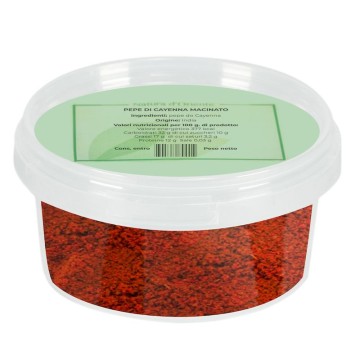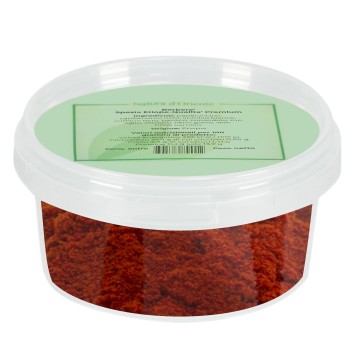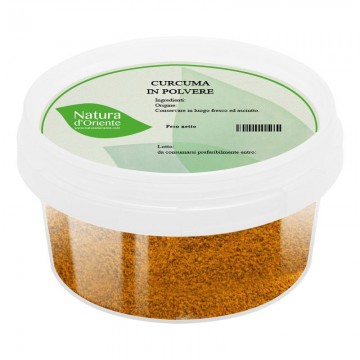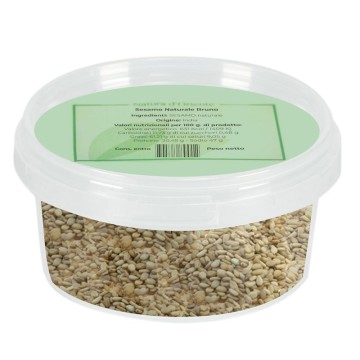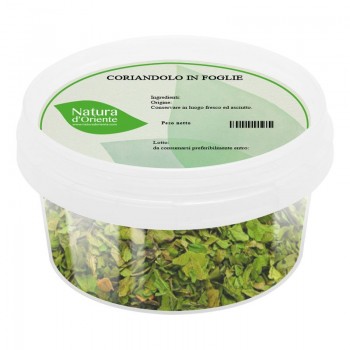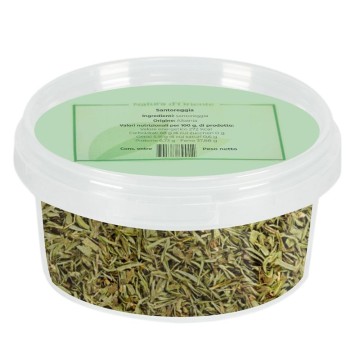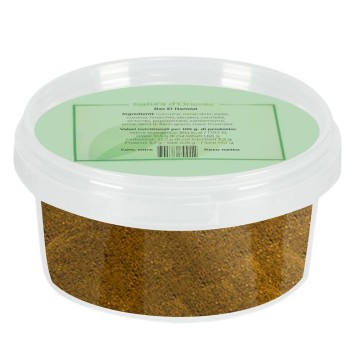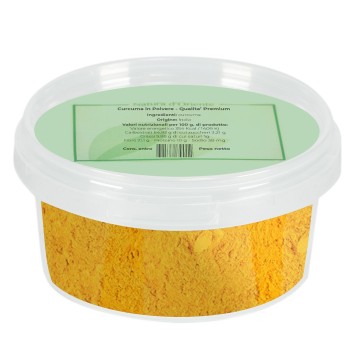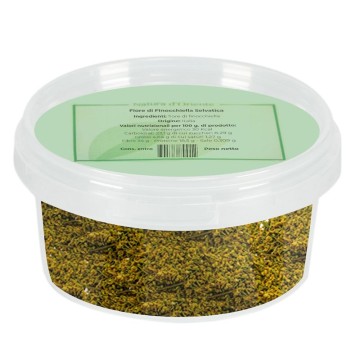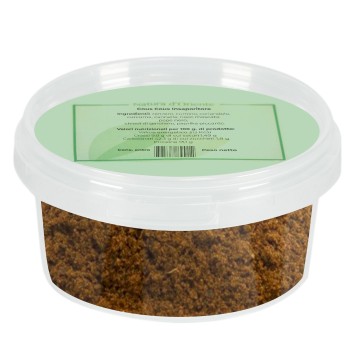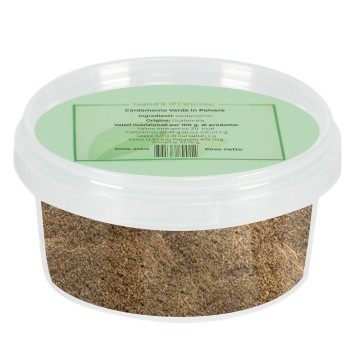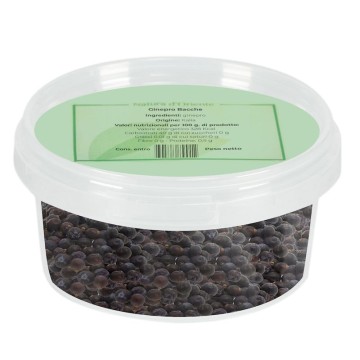This recipe comes from Western African cuisine, where Tsire is mainly used as a spice for meats. Both to flavor raw meat and for cooked meat before serving, including kebabs. It is a powerful mix of spices, which in this version gives a flavor between sweet and spicy (not excessively). It involves with a warm and peppery touch, adding an intense flavor to meats and vegetables, reminiscent of Indian curry. Depending on the traditions it may vary slightly, but our Tsire derives from the grinding of cayenne pepper, Jamaica pepper, cinnamon, ginger, nutmeg, cloves .
Tsire spice: properties and benefits
The Tsire blend includes various spices with beneficial virtues for our body. It is made up of two types of pepper which are excellent for their health qualities. Cayenne pepper (or Cayenne), is a type of chilli with a moderately hot and spicy flavor, thanks to a compound called capsaicin - due to its spicy properties. This type of pepper is known for its content of vitamins A (alpha carotene and beta carotene carotenoids), B and C, along with other excellent nutritional and mineral substances.
The carotenoids found in cayenne pepper, which the body can convert into the active form of vitamin A, become an essential nutrient involved in the functioning of the system immune, for sight, reproduction and growth. In addition, this pepper contains vitamin C, essential for immune health and an antioxidant in the production of collagen, iron absorption and for the well-being of some neurotransmitters. Its intense spicy flavor, due to capsaicin, hides natural antioxidant and anti-inflammatory benefits. Additionally, the use of cayenne pepper and tsire can help reduce the use of added salt, which is a health benefit. A second pepper, inserted in the Tsire spice, is the allspice or Jamaican pepper. This pepper contains various substances useful for our well-being, such as eugenol and gallic acid. These are nutrients that can facilitate the sense of satiety, favor the transit of food by increasing digestive enzymes. It is one of the spices that in the past was used in folk medicine to treat digestive problems, menstrual cramps, headaches, muscle aches and colds (as a natural anti-inflammatory).
To date, Jamaican pepper is widely used to flavor meats, sauces and vegetables, even in Middle Eastern cuisine as well as Caribbean; and to create sweets and liqueurs. In terms of taste, it gives the palate a flavor reminiscent of nuances of nutmeg, cloves and cinnamon - thus enhancing the other ingredients of the Tsire. Another food that is part of the Tsire spice is nutmeg, a spice that gives a warm, sweet, slightly nutty flavor with a small spicy note. It is often used for desserts and curries, mulled wine and tea. Although best known for its hot-acrid flavor, nutmeg contains a number of compounds that can help our well-being.
It is a spice rich in antioxidants, phenolic compounds, essential oils and vegetable pigments that were once used to reduce inflammation, and as aphrodisiacs. Cloves are the flower buds of a plant that give a versatile spice in the kitchen. They can be used for roasts, to add flavor and aroma to hot drinks and to bring a hot and pungent sensation to cakes and biscuits. Cloves are one of the main ingredients in gingerbread or various spice mixes, including Tsire. The compounds in cloves can have benefits for liver well-being and donate manganese to our body (an essential mineral for bones and the nervous system).
This element of Tsire also contains the antioxidant eugenol , considered beneficial for the health of the oral cavity. Cinnamon, in this spicy mix, gives a taste of nuances between sweet and spicy, which often enriches sweets and liqueurs. The aroma is reminiscent of cloves and also goes well with the nuances of flavor of chillies. Cinnamon has a good effect on digestion, blood sugar management and prevents gas and bloating. It has antioxidants that are also useful for its purifying action, and in the past it was known as a natural antibacterial (thanks to the cinnamaldehyde substance it contains).
Ginger is another piece in the ingredients of Tsire, which gives it a pungent and warm tone, and some health benefits. And nofor its ability to promote digestion, soothe stomach irritation and acidity, relieve nausea due to poor assimilation of food. Thanks to the gingerol compound, contained in its rhizome (root), it boasts natural digestive and anti-inflammatory properties, as well as antioxidants. Origins and history of cultivation The foods of the African continent often benefit from spices and flavors that blend together, as in the Tsire blend. The secret ingredient of every dish is almost always a spice, which adds taste but also provides vitamins and nutrients useful for well-being. Many spices and herbs used in Africa today are available all over the world, and also undergo slight variations compared to traditional recipes, enriching them. To create an exotic dish, however, the Tsire uses African spices such as nutmeg, chillies, ginger, cinnamon and cloves.
Tsire is a spice blend known for centuries in West Africa, which traditionally also consisted of peanuts . It was used to marinate and flavor grilled meats, added before cooking, or to give a more pungent touch before serving meat dishes cooked in another way. Tasty, but not overly spicy, it adds a curry-like flavor, and is often used in the preparation of kebabs.
Plants and flowers
Cayenne pepper , scientifically known as Capsicum Annuum, belongs to the Solanaceae family. city of the same name in French Guiana (Cayenne). It is a perennial but can last a few years, growing well in the tropical and subtropical climate. It reaches a height of about 60 cm and produces fruits, conical in shape elongated by about 9 cm, with medium spiciness. They are collected and dried, and then ground.
In other cases, the peppers are preserved in oil.
The dried berries of Pimenta Dioica , known as allspice or Jamaican pepper, were discovered in Jamaica during Columbus' expeditions. Today they are widespread on many continents. It is a plant of the Myrtaceae family, native to the Caribbean island of Jamaica, South America and southern Mexico. It is a typical evergreen tree, unlike normal pepper plants, and can reach 9 meters in height. Donate the fruits, green berries, which will be dried until they turn dark brown in color, and then ground. The Jamaican plant is considered prized for its excellent quality, as it contains more essential oils that give a richer flavor.
nutmeg comes from the seeds of Myristica fragrans, an evergreen tropical tree. Native to Indonesia (Moluccas archipelago in the Pacific), the tree can reach a height of about 20 meters. It features a canopy with large leaves, a gray bark, and small, yellow flowers. It is a dioecious plant, with male flowers and female flowers on different specimens, which bloom all year round. Nutmeg is obtained from the seed of the fruit. The spice mace is also obtained from the same plant, from the seed coat.
The so-called cloves are the flower buds of the evergreen plant Syzygium Aromaticum (also called Eugenia caryophyllata). This plant also comes from the Indian Ocean, from the Moluccas Islands also called spice islands. It was called "cloves" due to its similar appearance, with small brown nails and the smell similar to that of carnation - to which it is not related. The tree can reach a height of 10-15 m, presenting a greyish bark, intense green leaves with a pungent aroma. The small flowers have a short peduncle and an elongated calyx, which changes from green to red in maturity. They are harvested immature, to give the spice called clove.
The cinnamon tree is the Cinnamomum zeylanicum and comes from Ceylon (Sri Lanka). It is an evergreen tree of the Lauraceae family, with a well-known aromatic bark. It grows well in moist, well-drained soils, and reaches around 15 meters in height. Various other species related to Ceylon cinnamon are cultivated as a source of the spice, including Chinese cassia (Cinnamomum cassia), Vietnamese cinnamon (C. loureiroi), Indonesian cinnamon (C. burmannii), and Malabar cinnamon (C . Citriodorum). The spice of ginger comes from the rhizome or root of the Zingiber officinalis plant. It is a perennial that grows up to about 1 meter, developing an underground rhizome. The pale yellow flowers arise directly from the rhizome on shoots.Ginger plants prefer tropical climate with high humidity and high temperatures. For good growth, the soil must be moist and rich in nutrients. If they get too dry, they stop blooming and may even become dormant plants.
Nutritional values of the Tsire spice blend
The mixture of spices, through its ingredients, makes available different nutrients including minerals and vitamins. It has good qualities of manganese, potassium, vitamin C, iron, calcium, vitamin A and B vitamins . some ingredients give beneficial substances already mentioned such as eugenol, gingerol, capsaicin and gallic acid. How to use the Tsire spice in the kitchen It is a spice used to create flavored sauces, especially known on Nigerian dishes, and is perfect for flavoring meats before serving. In raw meat recipes, it is first dipped in oil or beaten egg, and then in the spice mixture. Excellent on grilled meats, with larger cuts, on which the spice is rubbed, and is also used to fry chicken with onions and peppers. Its best known indication on meat is to flavor kebabs. It goes perfectly with beef, lamb, chicken, fish and shrimp. Excellent spice also on vegetables and legumes. In vegetarian dishes, Tsire is used to create veggie burgers with legumes and olive oil. This spicy mixture is used in typical recipes such as Egusi's soup (made with ground melon seeds, meats and vegetables). A sprinkling of Tsire is used in peanut stew or bean purée, to add flavor, and sometimes in chickpea humus to add flavor. The sauce made from olive oil, yogurt and Tsire is delicious, to dress sandwiches or spread on toast and crackers. Tsire spice: side effects and contraindications Excessive consumption of spices, including the Tsire blend, can cause allergic reactions in hypersensitive people, with possible episodes of vomiting, nausea and skin reactions. Furthermore, taking over the recommended doses is contraindicated for those suffering from chronic gastrointestinal conditions, such as reflux disease, spastic and ulcerative colitis, duodenal ulcers, diverticulitis. Caution is advised in doses for pregnant and lactating women. The spice mixture should be stored in a dry, cool and dark place.

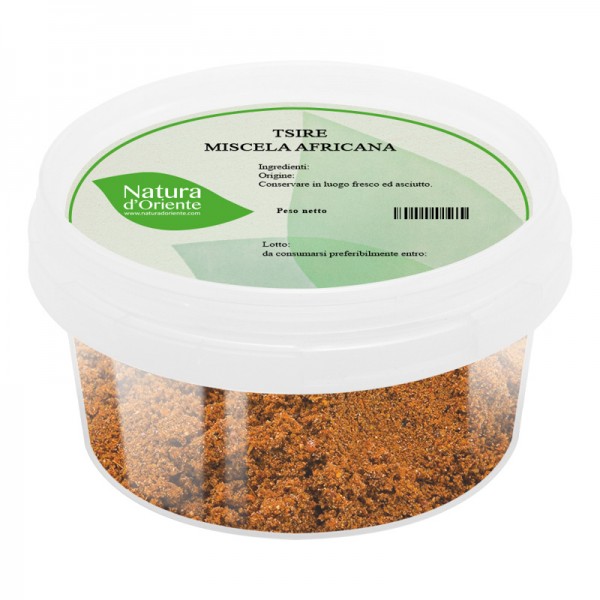





 No reward points for this product.
No reward points for this product.
